
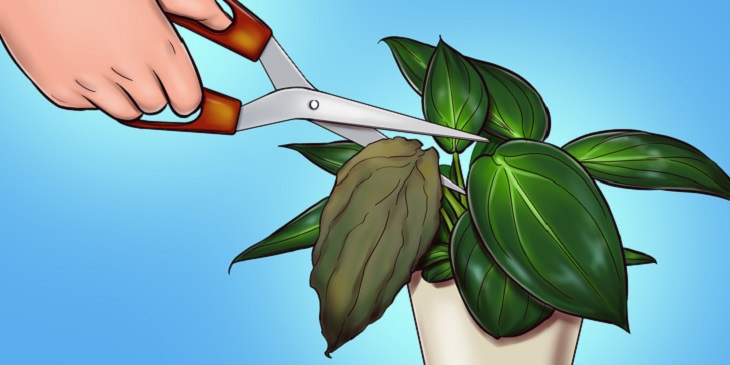
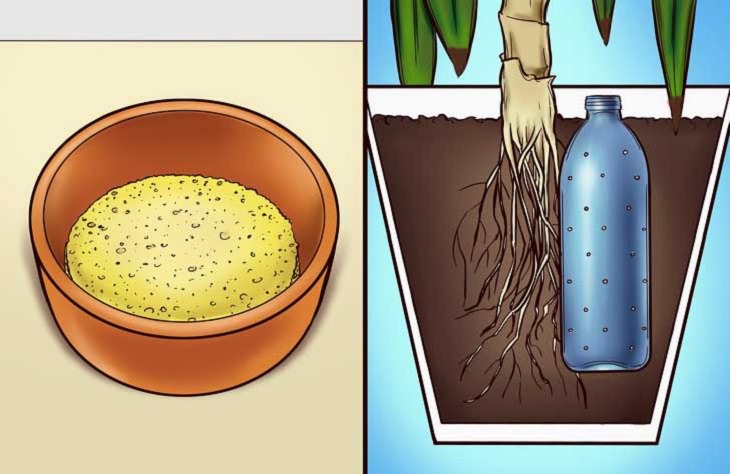
Leaves with a brown tip indicate insufficient water supply to the plants. This occurs due to the process of fluid transfer within the plants. When watering potted plants, water travels from the soil through the roots to the rest of the plant, including the leaves. Insufficient water in the plant and soil primarily affects the leaves, causing browning at the tips. This phenomenon indicates several potential problems, including infrequent watering, poor-quality soil that cannot absorb water effectively, and damaged roots due to over-watering or lack of space in a small pot.
To address this issue, there are two solutions to maintain proper soil moisture:
1. Placing a sponge at the bottom of the pot, which absorbs excess water and releases it when the plant requires hydration.
2. Inserting a plastic bottle with small holes into the soil allows the plant to drink water as needed.
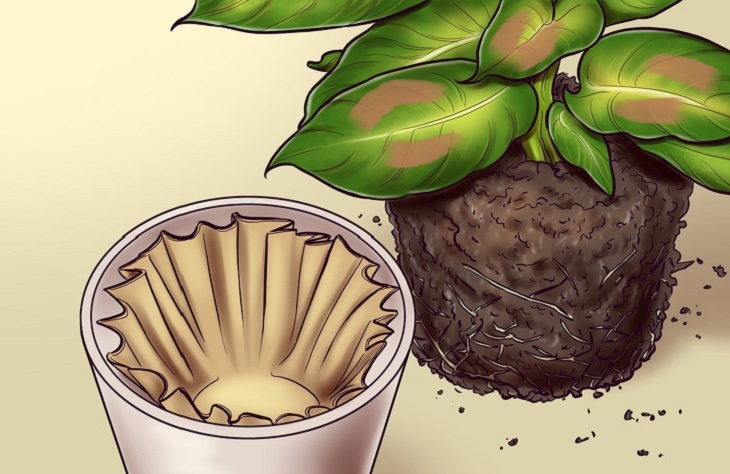
Sometimes we worry about overwatering our plants, which can lead to fungal growth and the appearance of brown spots in the center of the leaves. These spots can spread toward the edges of the leaves if the issue is not addressed.
What you can do: Allow the top 5 inches of soil to dry out before watering your plants again, and avoid leaving the pot flooded with water. If the soil remains consistently wet even after watering, it may be necessary to adjust the amount of water used. Using coffee filter papers at the bottom of the pot or planter can help drain excess water and maintain a healthy level of humidity for the plant.
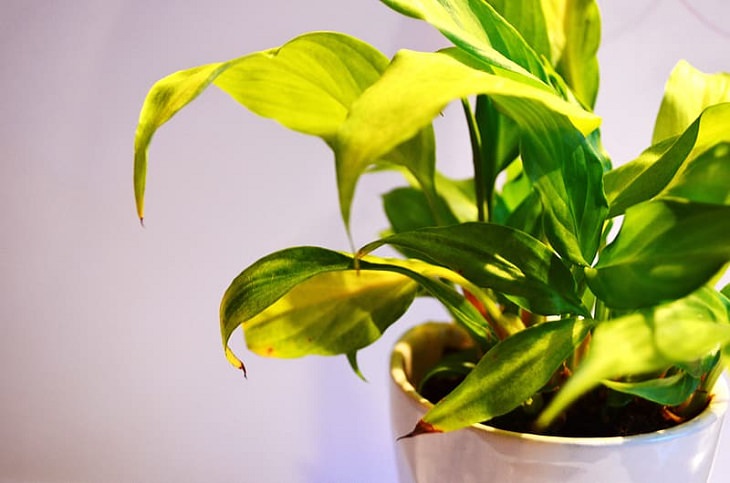
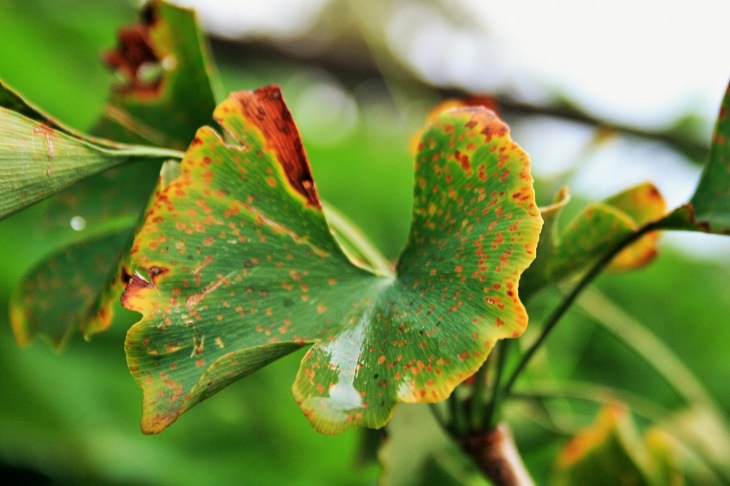
To address this issue, if the plant is potted indoors, it is recommended to isolate it from other plants to prevent further infection. Additionally, ensure that the plant is not placed too close to windows to eliminate the possibility of sun exposure as the cause of the spots. Trim off the infected leaf and allow the rest of the plant to heal.
If the plant is grown in a yard or garden, you can consider fertilizing it with sulfur and copper-based substances. Another option is to use a homemade natural solution consisting of ½ teaspoon of baking soda powder mixed with 4 liters of water to treat the plant.
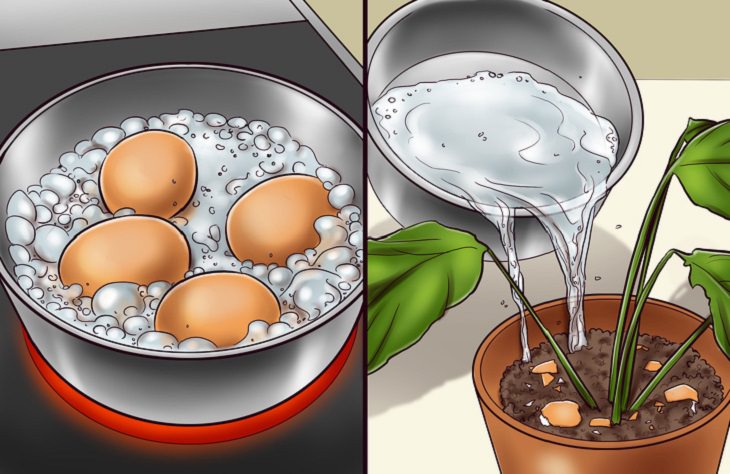
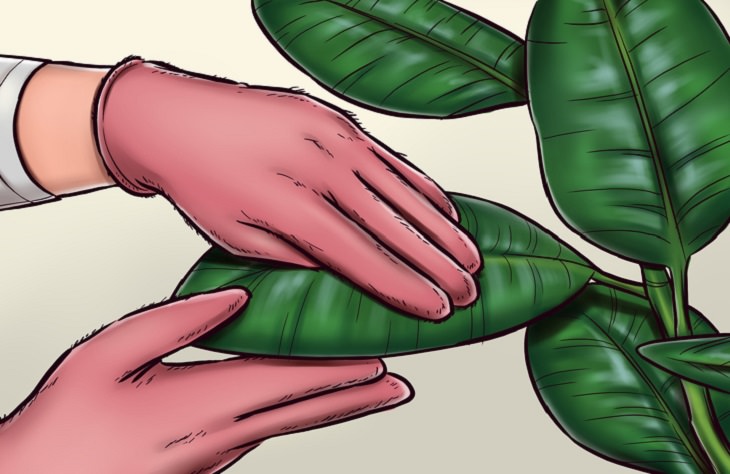
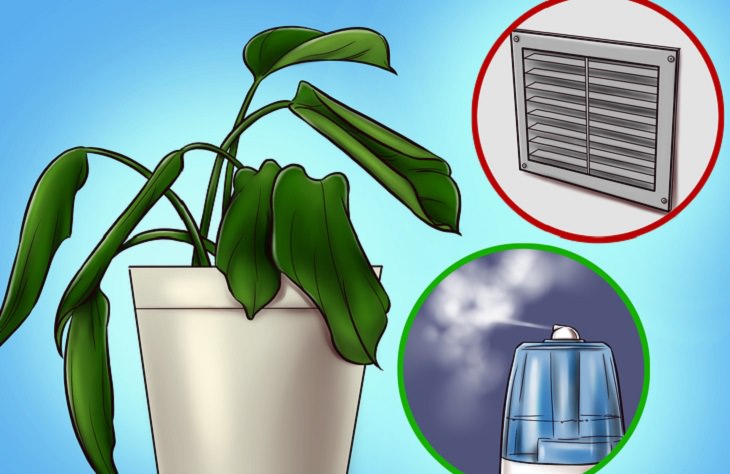
Some of the plants we purchase and bring into our homes or offices originate from tropical regions with high levels of humidity. However, these plants may struggle to adapt to the lower humidity and limited space in our indoor environments. Consequently, their leaves may develop unsightly curves, giving the plants a neglected appearance.
To prevent this, it is important to avoid placing your plant pots near vents or heat diffusers, as these can damage the plants. Additionally, you can enhance the humidity level around your plants by grouping several pots together, regularly misting them with water, and increasing the frequency or quantity of watering. However, it is crucial to exercise caution and avoid excessive watering.